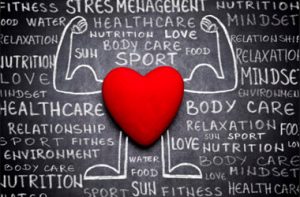The winter months often are the hardest for people to get outside and exercise. The colder temperatures put a damper on long walks, and for those with cardiovascular disease who are in a Prevention and Rehabilitation Program, it can be a challenging time.
However, dressing for the colder weather will make exercising during those months more tolerable, and even enjoyable when conditions permit outdoor exercise. The problem with the colder weather is that it impacts how your body reacts while exercising.
When outside in colder temperatures your body will see a reduction in its core temperature due to your body directing the flow of blood to your midsection. As a result of the additional blood in that area, when exercising it can increase your blood pressure as your heart is pumping more.

Those that suffer from heart disease can see heart-related symptoms such as angina (chest pain) from the additional pressure. Angina feels much like burning in the chest, a tightening of the chest and or a feeling of having difficulty breathing.
It is highly important that those with heart problems be aware of the symptoms and if they should feel any of those mentioned they should immediately stop exercising and get medical assistance right away.
So the question is, how do you exercise safely outdoors during the winter. Here are a few tips to help keep you active and fit.
1. Temperature is your guide in this case. If too cold for comfort, then avoid exercising outdoors and consider a trip to your local mall to walk the hallways and get your daily exercise requirements. If you choose to go outdoors, then do not continue exercising if temperatures go below -10°C.
2. When preparing to exercise it is recommended to add an extra five minutes to your pre-exercise warm-up time. This will help your body perform better in the colder temperatures much like a car does once it has warmed up.
3. While exercising outdoors pay attention to the conditions in the areas you are walking. Watch for snow and ice as these can lead to falls and possible injury. It is ideal to avoid walking near buildings as snow or ice could potentially fall from above.
4. Make sure you bring liquids to ensure you do not get dehydrated. When we exercise our sweat glands, go into overdrive, and in colder temperatures, sweating is a bad thing. Pace yourself appropriately, and if sweating begins, reduce your activities to a slower pace.
5. Dress appropriately for the weather conditions so as to keep extremities warm. Wet weather, especially in the winter will reduce the insulation factor of winter clothing and will let heat leave your body. The best approach is to layer your clothing and use rain resistant outerwear.
6. Wear high-quality running shoes. These are ideal in all conditions unless snowing as they have better grip qualities and will help to reduce your chances of taking a tumble. If colder outside, consider doubling up your socks or purchasing synthetic socks.
Always keep in mind that just because it is cold outside doesn’t mean that exercising can’t be an enjoyable experience – just make sure when you do exercise that you do it safely!